Just when you thought it was time to vamoose
From all of this talk of the law of Fair Use
Regarding the mash-up of Star Trek and Seuss
Here comes the sequel, we’ll call it “Part Deuce!“
And with that, I shall stop rhyming…although I can’t say the same for GLENN HAUMAN of ComicMix, the folks who, this past March, won a copyright infringement lawsuit filed against them by Dr. Seuss Enterprises (DSE). You can read more about the judge’s final ruling here.
The case involved an illustrated “mash-up” of Star Trek and Dr. Seuss titled Oh, The Places You’ll Boldly Go! This proposed book was written by “The Trouble with Tribbles” author DAVID GERROLD and illustrated by award-winning comic book artist TY TEMPLETON…with ComicMix doing the publishing. Back in late 2016, they held a Kickstarter that raised $30,000 but were quickly shut down by DSE, who later sued. The nearly two-year legal battle was a back-and-forth rollercoaster ride, with the lawsuit eventually being dismissed after the judge ruled Boldly to be Fair Use.
As I pointed out at the end of that previous blog, DSE always had the option to appeal the decision to the Ninth Circuit…something they did just two weeks after I published that blog, on the same day the district court entered Hon. Judge JANIS SAMMARTINO’s ruling officially into the record. The Plaintiff’s notice of appeal also asked for, and was granted, an extension of a few months in order to file their opening appellate brief…all 81 pages of it! (No, you don’t have to read it…although it is pretty interesting and very well-presented.)
DSE also submitted four amicus briefs, which are opinions submitted to the court by non-litigants who, even though they aren’t part of the lawsuit, still have a vested interest in the outcome of the case. In this instance, DSE got help from two professors from the Berkeley School of Law, three members of The Copyright Alliance, the Motion Picture Association of America, and The Sesame Workshop (yep, Big Bird is buddies with The Cat in the Hat!). That’s another 140 pages to add to your summer reading list. They mostly say the same thing…essentially that the judge got it wrong and here’s why they think so (and why the law backs up their belief).
It’s a little early in the process for me to start making predictions. After all, this is only the initial brief (which is anything but brief!), and ComicMix hasn’t had its chance to respond yet. I will try to summarize what arguments are being made in the appeal, however. But before I do, since we now have the opening brief from DSE, I reached out to Glenn Hauman for an initial statement from ComicMix.
As he’s done previously, Glenn responded poetically (with some pretty decent rhymes—including one in Latin!)…
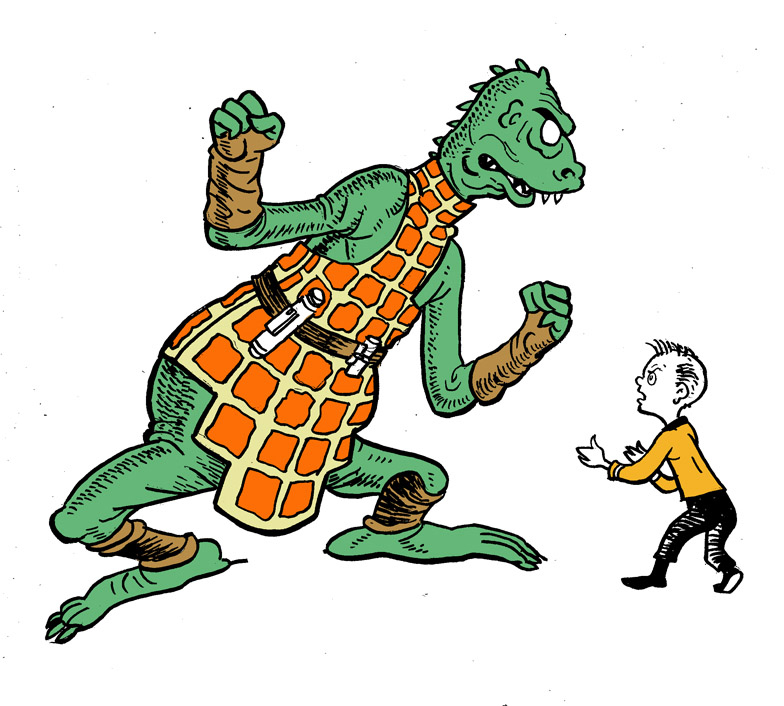
The Seuss estate’s lawyers can’t bear that they lost,
They’ll fight to the end, no matter the cost.
“We couldn’t have failed! Why, there must be a catch!
We’ve got so much money, let’s try a rematch!”
They’ve gone back to court to file an appeal.
(We think they have none, and that’s how we feel.
We’re much more appealing! We speak for fair use!
And we will not stand for copyright abuse!)
The Seuss brief is warmed over— it just reheats
bad theories that already brought them defeats.
Same goes for their amicus curiae,
Those Grinches and Grouches and law profs. Query why
They bothered to re-repeat Seuss’s bad case,
filling hundreds of pages to help them save face.
The law profs are wrong! Just ask their law students!
Or read the pertinent fair use jurisprudence!
And as for the trademark claims, not to get cheeky,
but they raise not a peep from Seuss’s amici.
No friend of the court contends the book’s title
offends the First Amendment, which is vital.
And the art style trademark the Seuss estate claims?
In the amici’s eyes, it went up in flames.
So fasten your seat belts, we’re on to Round Two,
While they run up their hours and billables too.
When you see our response, then we think you’ll agree,
that nothing should alter the judge’s decree.
The judge meant what she said, she said what she meant.
The judge got it right, one hundred percent.
And to everyone out there who’s asking me, “Glenn,
when’s the book coming out?” I cannot say when—
because oh, here we go with this Oobleck AGAIN.
I love a good rhyming couplet, don’t you?
Okay, let’s see if I can break this down for you all without writing a 90-page thesis paper. Ready?
WHAT AN APPEAL IS NOT
A lot of Americans don’t understand what it means to appeal a verdict in a lawsuit or criminal trial. It doesn’t simply mean, “We didn’t like the outcome, so let’s start over and have a completely new trial!” Instead, you have to convince three new judges that the first judge made a mistake (or two or ten). Hey, we’re all human; stuff happens.
But it’s not easy to convince one judge that another was wrong. Judges don’t like to be wrong—and let’s face it, they’re supposed to know the law and get it right!—and other judges are hesitant to overturn their colleagues’ rulings.
As a practical matter, speaking only very generally, plaintiffs’ appeals for reversals of judgements they don’t like succeed only about 18% of the time. So while it’s far from impossible for DSE to get what they’re looking for, it’ll be an uphill climb…especially in the Ninth Circuit Federal Appeals Court, which tends to be liberal and favor the “little guy” over the big “corporate bully” much of the time.
But if Judge Sammartino did make a mistake, and DSE can convince the three-judge appeals panel, then they just might get a new trial after all, and possibly even win part of the lawsuit without a trial. More on that at the end.
SO WHAT MISTAKE(S) DID THE JUDGE ALLEGEDLY MAKE?
There were actually two complaints in the original lawsuit: copyright infringement and trademark infringement, and the judge dismissed both. But because there are differences between the two kinds of infringements, I’ll tackle each separately…starting with copyright.
After nearly two years of motions and pleadings and responses and replies from both sides, Judge Sammartino finally ruled that Boldly was, as a matter of law, Fair Use and therefore protected by the First Amendment against any liability for copyright infringement. She therefore dismissed the copyright complaint entirely.
Needless to say, DSE doesn’t agree with her legal conclusions.
In order to understand what mistakes that DSE is arguing that the judge made, we need to briefly review the four aspects of Fair Use. As most of you already know, the concept of Fair Use is the “peace treaty” in the never-ending battle between copyright protection and freedom of speech (which are, by definition, mutually exclusive). In other words, you can’t copy someone else’s creative work…unless it’s determined to be a “fair use” of the source material. But how is Fair Use determined?
There are four factors that must be considered to determine whether something is or is not Fair Use…and DSE has problems with the judge’s determination of three of them. First, let’s talk about the one factor DSE does NOT have any problem with (and ComicMix doesn’t dispute)…
1. Is the original work worthy of copyright protection?
Yes, of course it is! Dr. Seuss’ entire body of work is original and very creative. No one in this case thought for a second that it wasn’t worthy of copyright protection. But that’s just one factor out of four.
2. How is the new work potentially using the original content?
Things like parody, criticism, or some kind of educational commentary are usually protected by Fair Use. But the judge ruled early on that Boldly did NOT fall into any of those categories. However, she did rule that the work was “highly transformative“….and this was a crucial part of her ultimate decision to dismiss. Although commercial in nature (which does not disqualify something from being Fair Use) and obviously using significant elements from Seuss’ original literary works, the resulting “mash-up” became something very different and unique.
And here is where DSE believes—and VERY strongly!—that the judge screwed up. Take a look at the following comparison of artwork from the original Seuss stories and the mash-up…
Now, obviously, the text is completely different. But is the artwork copied? Well, the ground is certainly the same (mostly), is yellow while the sky is green, and the pose of the Spock on the right is nearly identical to the north-going Zax. So as far as DSE is concerned, they “slavishly copied” the original.
Of course, the judge believed differently. While the right-side Spock might be standing like the north-going Zax, the mirror-Spock’s pose is unique. And of course, neither Spock is a Zax. Plus there’s a 3D chess board and children’s playground in the Boldly version that never existed in the original. So is copying just the lines of the sand (and little else) really crossing a line in the sand of “slavishly copying” as DSE says?
Before you answer, take a look at this page, as well…
Now, obviously Scotty is not Sylvester McMonkey McBean, the Sneeches have been replaced with Starfleet officers, and the money table is now a transporter console. But the machine is the exact same…line for line, color for color. And the facial expressions of everyone in the mash-up version appear to match nearly everyone in the original.
So is the second illustration really transforming the first one into something completely new and unique? The judge said “yes,” but DSE says “no.” Which conclusion will the appellate court judges agree with?
Well, again, before you answer, let’s move onto the third factor…
3. How much of the original work was used?
In general, the more you copy, the weaker your argument is for Fair Use. So the question is: did ComicMix and illustrator Ty Templeton copy more than they needed to or only as much as they needed to in order to create a work that could be considered a “mash-up” of Star Trek and Dr. Seuss? Remember that the judge had already ruled that a mash-up could be considered transformative in this case. So the question now was: did ComicMix copy too much? The judge ultimately answered that with a “no.”
DSE believes, again VERY strongly, that this was another mistake. Let’s take a look at some more artwork comparisons…
The background is the exact same. All ComicMix did was to add in eleven characters from Star Trek TOS drawn in the Seussian style. Granted, drawing those characters was a lot of work. But if you look at the amount of the original material that was copied, the answer is nearly 100% (they just dressed up the original kid as Captain Kirk instead of leaving him in pajamas). But aside form that, line for line, color for color, ComicMix copied 100% of the original artwork. How is copying 100% NOT using too much?
Here’s another example…
So ComicMix pretty much copied all of the important artwork from the original (rocks, grass, tree), ditched the balloons, swapped the little boy for the little Kirk, and added three “Seussian style” Klingons. Too much?
Unlike this blog, DSE’s filing spends two dozen pages making their argument (lest you think that I write too much!), including citing a case from 1997 about a mash-up of The Cat in the Hat and the OJ Simpson trial (yes, that really happened)…
In that very similar case, the judge ruled that the work was not parody and not Fair Use, and Penguin Books (a huge publisher) was enjoined from ever releasing it.
For some strange reason, the DSE attorneys did NOT bring up this precedent during their previous arguments in front of Judge Sammartino…even though DSE actually won that case! Whether their failure to cite the ruling in the lower court will count against DSE on appeal is anyone’s guess. However, this wasn’t the only established caselaw that DSE cited in their brief.
4. Will the new work potentially harm the original copyright holder financially?
There were two ways, DSE argued initially, that Boldly could do them financial harm. First, assuming that Go! and Boldly were both sitting on the bookstore shelf, the parents and/or friends of a Trekkie graduating from high school or college might see the Star Trek mash-up and buy that instead of the original version.
The judge didn’t go for that argument, as DSE has sold 12.5 million copies of Go! over the decades (with sales increasing during the past four years) while ComicMix was printing only 5,000 copies to be sold primarily online…hardly a threat to DSE’s profitability.
The second financial harm, argued DSE, was in the loss of potential licensing opportunities in the future. If other publishers decided to create unlicensed mash-ups of their own—instead of purchasing such a license from DSE first—then DSE would lose revenue they would otherwise have collected.
On this point, the judge felt it wasn’t enough to simply imagine this worst case scenario. Because she had ruled early on that Boldly was transformative, the Plaintiffs needed to prove that they would lose licensees in the future…and they failed to show that. In fact, their style guide for licensees actually instructs them not to show characters with items “not from [the Seuss] world” and not to “use Seuss characters with third party’s characters.” In other words, their own style guide precludes a mash-up with Star Trek or any other non-Seuss intellectual property.
Needless to say, DSE did not agree with this ruling either, and they pointed to two significant mistakes that they believe were made by the judge.
The first was the question of who had to prove what proof. The judge said that because Boldly was transformative, the Defendants didn’t have to prove that there was NOT potential market harm, but rather the Plaintiffs had to prove that there WOULD be harm…something DSE failed to do. The judge’s mistake, argues DSE, is that Boldly should never have been classified as transformative in the first place! And so, if it’s not a transformative work, then the burden of proof falls back to ComicMix to prove that Boldly will not harm DSE…something that ComicMix likewise failed to do. You got that? DSE simply thinks it was ComicMix that failed to prove what they needed to prove…not DSE.
The second mistake is what I like to call the “What if everybody else…” argument. So let’s assume that the original ruling stands and Boldly gets published. Sure, there’s only 5,000 copies out there, or maybe even double or triple that assuming sales are robust. That’s still just a blip compared to the hundreds of thousands of copies of Go! that are sold each year.
But what happens when another publisher decides to do a mash-up of Dr. Seuss and Star Wars or Dr. Seuss and Marvel superheroes or any of countless other properties from Doctor Who to The Simpsons to Hello Kitty to Stranger Things to Fortnight. With the door open to all of those potential mash-ups, DSE could suddenly be facing the death of a thousand paper cuts with never-ending competition from a parade of mash-ups all stealing their sales. It’s an intriguing argument…although again, purely hypothetical. Will the appellate judges go for it? We’ll find out…
WHAT ABOUT THE TRADEMARK PART OF THE LAWSUIT?
This part will be shorter than the copyright part, folks…promise! The trademark complaint was initially divided into three elements: the title itself (Oh, The Places You’ll Boldly Go! is nearly identical to Oh, The Places You’ll Go!), the typeface used for the title (same as the original), and the Dr. Seuss artistic style.
The judge ruled early on that the mash-up title itself is protected by the First Amendment, and so that element of the complaint was almost immediately dismissed. In her final ruling a few months later, the other two trademark complaints were also dismissed. The typeface portion was dismissed because typefaces cannot be trademarked…only the specific use of them for logos like HOT WHEELS or THE NEW YORKER magazine. Since the mash-up adds Boldly to the title, it’s not an exact match. And also, the title of the original book as a logo was never trademarked in the first place.
As for the “Seussian”artistic style, she also felt that such a claim was far too broad and didn’t qualify for any trademark protection. The characters can be trademarked but not the entire artistic style.
DSE’s brief spends about six pages on this, but in short, they argue that the First Amendment does not necessarily protect the Boldly book title, and that the typeface and artistic style are, indeed, worthy of trademark protection. While it’s not clear how convincing DSE’s argument, it’s perhaps not a good sign that none of the four amicus briefs mentions the trademark question at all. But, hey…never hurts to try, right?
SO WHAT HAPPENS NEXT?
It’ll be a little while until our next update. Glenn Hauman informed me that, like DSE, ComicMix’s attorney asked for, and was granted, a time extension to respond. So that’ll be a few more months at least.
But let’s fast forward to contemplate the ruling from the Ninth Circuit Court of Appeals…which could well be a year or two away. While I won’t pretend to be able to read the tea leaves on this one (especially with only the first appellate brief having been filed), I can tell you that there are a few possible outcomes…
1. The lower court ruling is upheld on appeal…in which case, DSE has the option to appeal to the entire Ninth Circuit for a review and opinion by all of the judges. If that happens, expect to be reading about this case until the Vulcans land in Montana!
2. DSE wins on both their copyright and trademark appeals. If this happens, then the appeals court will rule that Boldly is NOT Fair Use and, in the best scenario for DSE, grant an immediate summary judgment against ComicMix for damages and attorneys fees. But there will still be a new trial for the trademark claims, as DSE isn’t asking for a summary judgment there. Instead, they’re requesting (if they win on appeal) a jury trial on the trademark questions to determine the facts regarding their font, artistic style, and the title of the book itself.
3. The whole thing is booted back to the lower court…trademark AND copyright (or just copyright). It’s possible that the appellate judges decide they want to do this the old-fashioned way and let a jury decide whether Boldly (and mash-ups in general) is or is not Fair Use. As I discussed in a previous blog, for more than three centuries, Fair Use was decided by juries as a determination of fact. Only in the last 30 years or so have judges begun ruling on Fair Use before trial as a determination of law. This is mostly because many judges don’t always trust juries to “get it right.”
So if the appellate court orders the case sent back for a jury trial, well, we pick up our story where it left off back in March. But this time it’ll get to play out with in court…
…and I’ll have a LOT more to talk about!

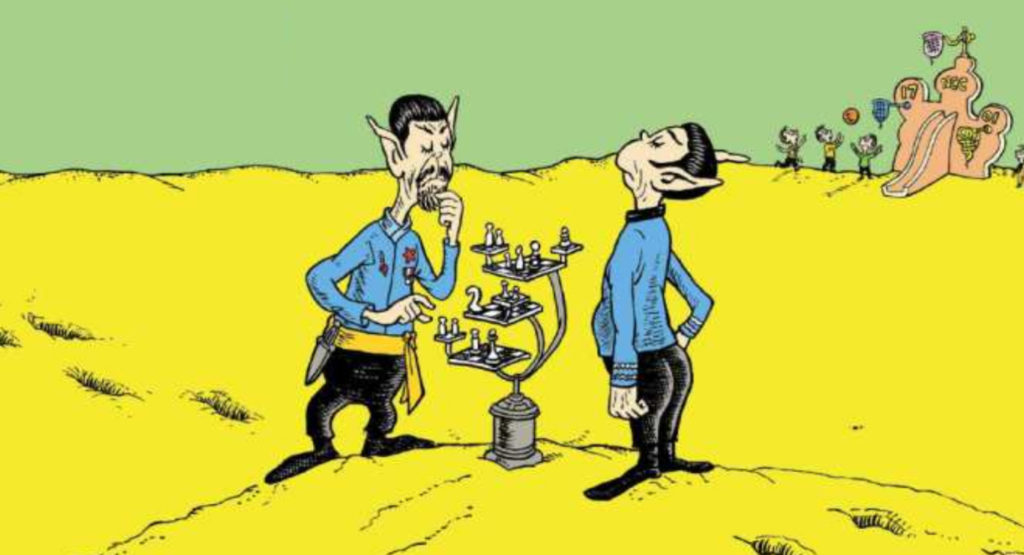

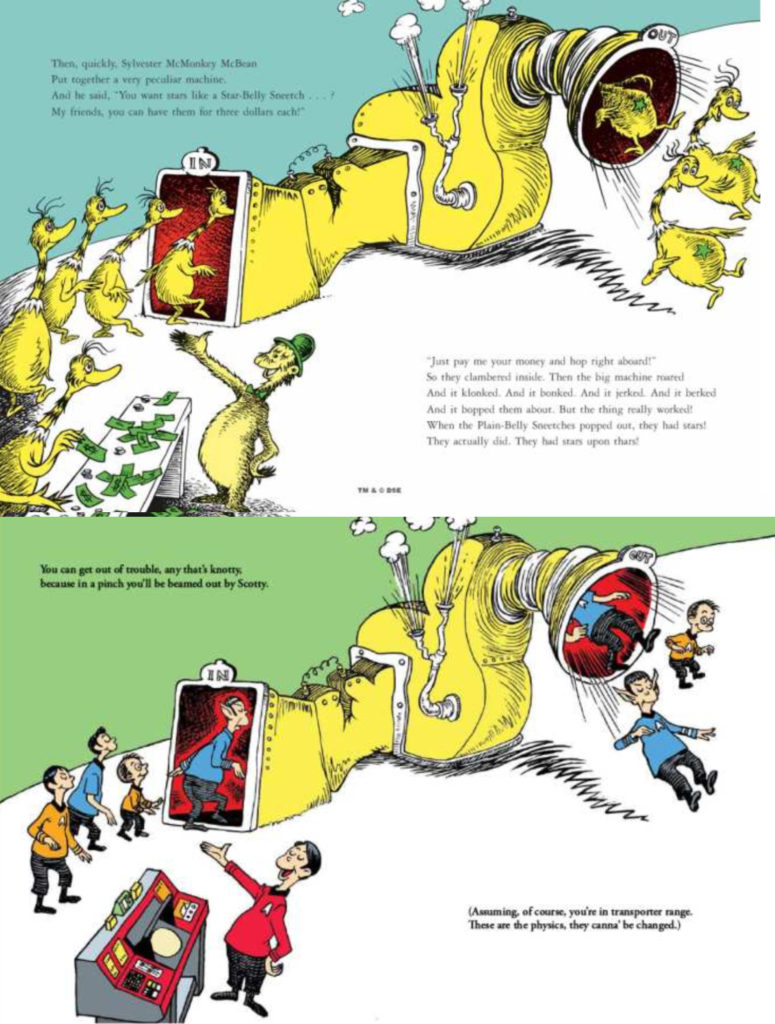
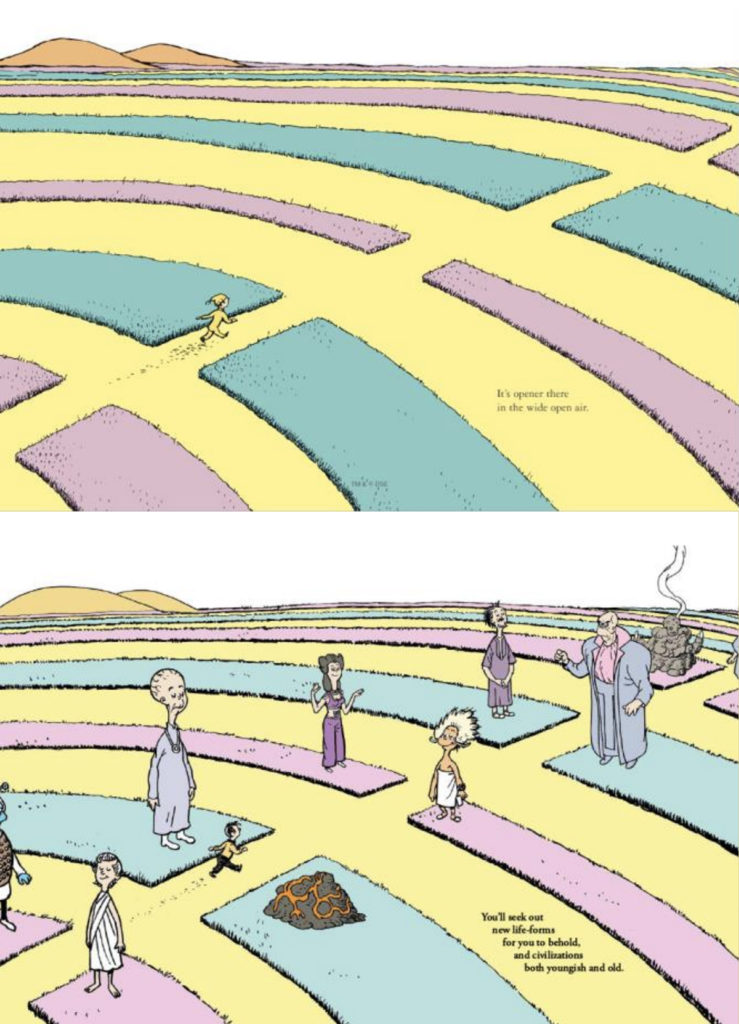
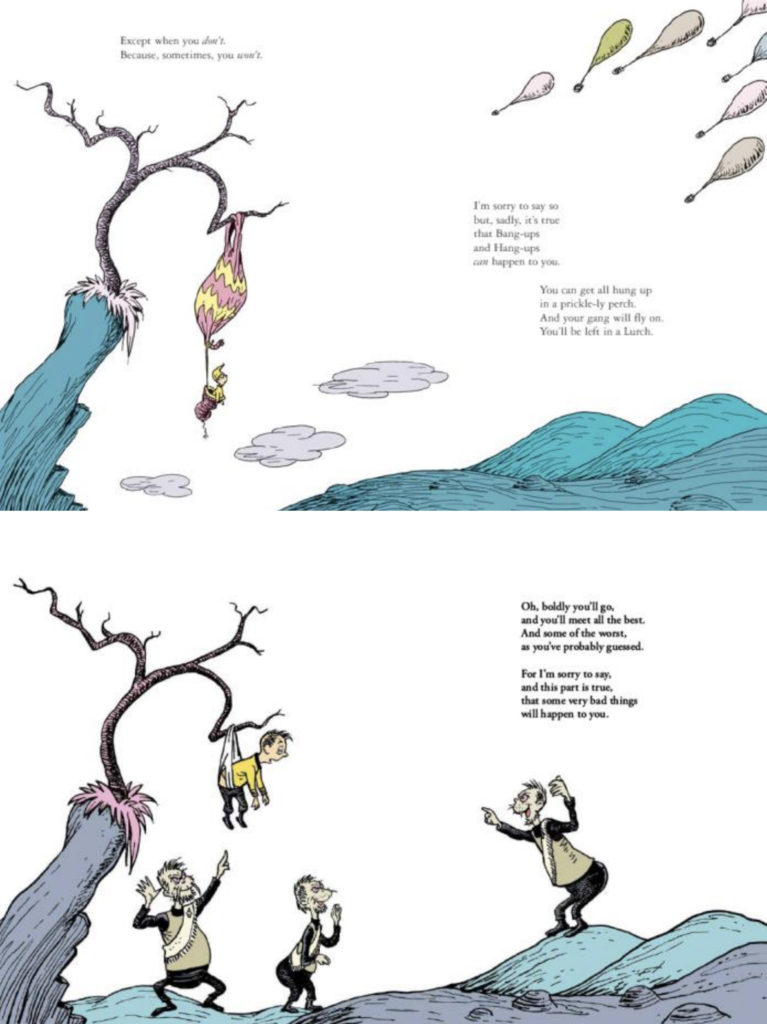
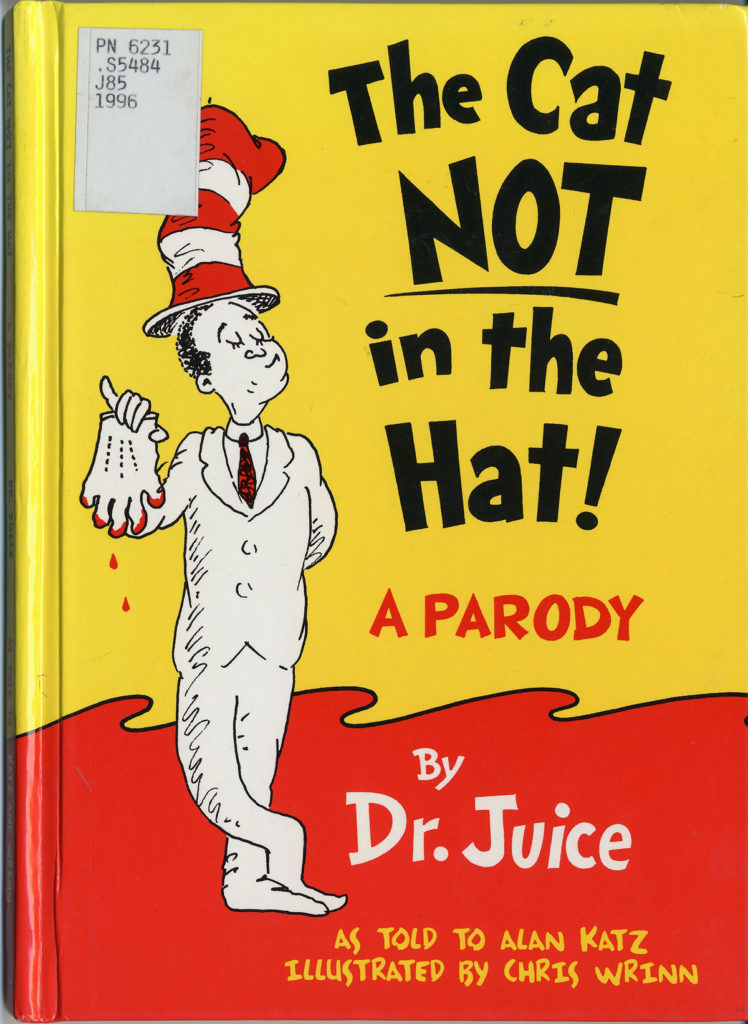
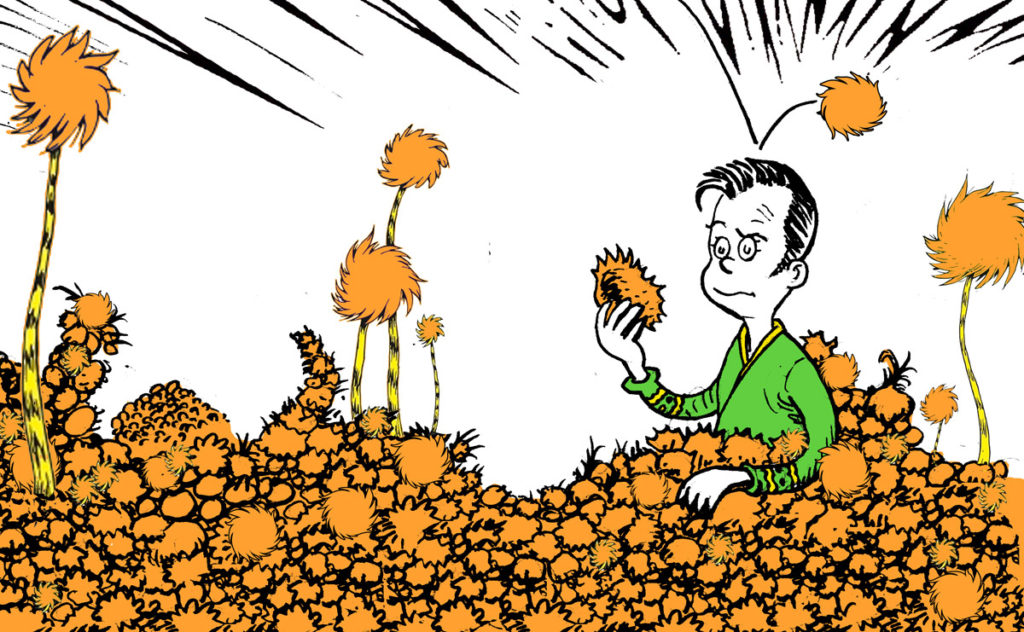
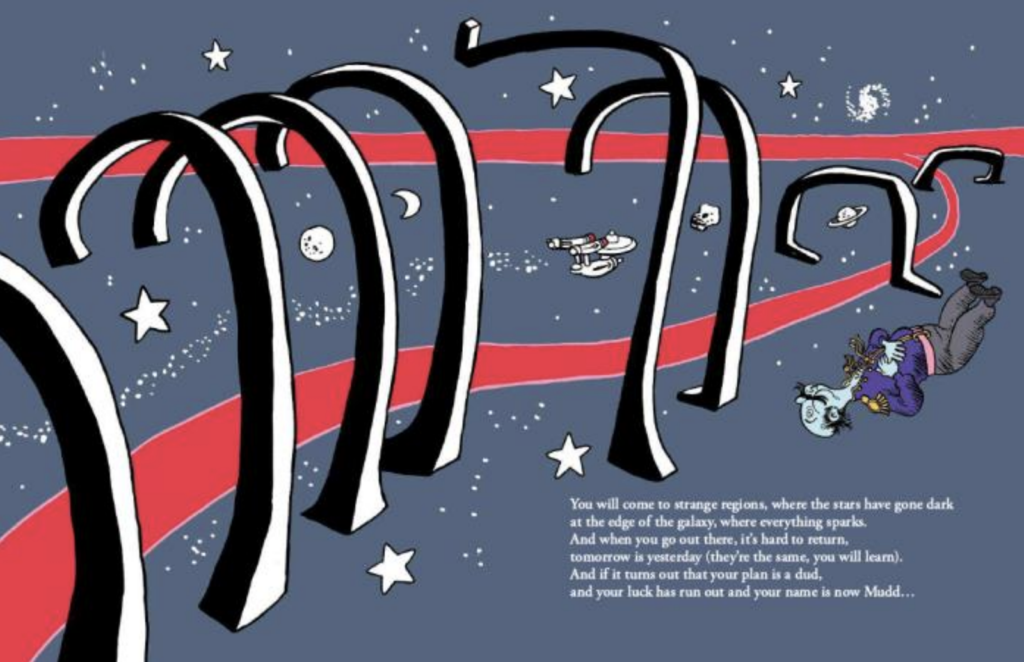
At a rough estimate (very rough), how much money has been spent on this case so far? Say to the nearest thouand.
While I’d love to be a know-it-all and give an estimate as though I were some kind of expert, I really have no idea. During the Axanar lawsuit, I was quoting estimates provided to me by people closer to the lawsuit itself. But this time, my only contacts are Glenn Hauman and David David, and I haven’t asked either how much they are paying their attorney per hour nor how many hours have been accrued. (And honestly, it’s impolite to ask.) As for DSE, they probably keep their lawyers quite busy and might have an annual retainer and/or get preferred rates…or not. Also, many of the hours spent might have been put in by associates billing $300-$400/hour versus partners billing twice that or more…assuming those are even the rates they are paying.
All of this is to say that I just don’t know and wouldn’t even begin to be able to guess.
That’s fair enough. I was just curious.
Six figures at least? Maybe more?
Oh, six figures was probably reached in the first few months, Ronnie! Lawsuits generally average about $20K/month to litigate. The question is whether it’s gotten into the seven figure range for DSE yet. I doubt ComicMix is paying that much, but I really have no idea.
Some of these cases are very interesting however the Vic Mignogna case is much more juicy and interesting since t has social implications as it brings out the question of the #MeToo movement and has it gone too far? For those not in the know Vic Mignogna is a Voice actor for Japanese Anime and has been for several decades he had a big break in that one of the characters he voices was in the third largest Movie in Anime history. One of his colleagues Monica Rial came forward and accused him of sexual assault in his hotel room and he was subsequently fired. There was also a Twitter Campaign by her Boyfriend Ron “Soy Boy” Toye and they and others contacted conventions and got him fired from them. Many other woman came forward and made their own accusations and he was also accused of Pedophilia.
Pretty Damning right? Except not really this alleged incident took place over a decade ago and there is video of her Vic and another person going out for a meal immediately afterwards and of course many video’s of them interacting in a very friendly way multiple times at cons afterwards. The police were both never informed and they have not even cared to make an investigation. The Pedophilia allegations stem from the fact that he hugs his fans in public on stage in front of cameras some of which were teenagers. The hundreds of allegations were from anonymous Twitter accounts and they have not came forward to the legal system.
Well what could Vic do? well luckily a lawyer and a fan came forward and started a kickstarter for a legal defence currently around $240,000 and he sued for defamation and loss of earnings. Now that gives you some idea of the cost involved and no way would Vic of been able to fund this by himself or indeed most members of the public if these unfounded allegations were made against them. Note I use the term unfounded I use it in the meaning of no evidence not if they actually did or did not take place.
There are dozens of hours of Depositions and analysis of the filings on Youtube. Including from real lawyers especially the one who started the Kickstarter though of course he is not conducting the defence.
So if you are interested in these types of things its good to follow you can make up your own mind regarding the truth of the allegations it is not my place to either tell you or even share my opinion because it is worthless as it is only my opinion. Though many of his detractors in the #KickVic movement keep on going on there is no smoke without fire yet so far not a flame has been shown.
It does beg the question has the #MeToo movement gone too far? Also what would happen to a “Normal” person Vic is at best a minor celebrity and even he could not afford the hundreds of thousands of dollars this suit has cost.
You’ll note, Glenn, that I have been carefully avoiding wading into the Vic Mignogna controversy. The main reason for this is because I endeavor to make Fan Film Factor a positive source of fan film coverage (and related news) and not bash or impugn any specific fan filmmaker. At most, I’ll criticize CBS if they make a bad episode of Discovery. So I’ve mostly stayed out of the Vic fracas.
Unfortunately, by posting the comment that you just did, I feel I need to correct a point you made that is not accurate. You said, “Note I use the term unfounded I use it in the meaning of no evidence not if they actually did or did not take place.”
In the U.S. justice system–both criminal and civil–sworn eye-witness testimony under oath (including sworn affidavits by witnesses) is considered a form of evidence and acceptable by the courts. Indeed, many times when there is no physical evidence, sworn testimony from one or more eye-witnesses has been enough for a conviction (in a criminal trial) and/or finding of liability/culpability (in a civil trial).
So when you state or imply that there is no evidence that Vic’s actions took place, Glenn, that is not correct. This link provides summaries of and direct quotes from eleven sworn affidavits involving Vic’s actions, some of which could potentially be considered sexual harassment or even sexual assault (including an affidavit from Vic’s former fianceé Michele Specht, who was part of the cast of STC).
This does NOT mean that I have concluded that Vic is or is not guilty of these allegations. As I said, I have chosen to stay out of the fray on this. I am simply correcting a misstatement by one of my readers that there is no evidence of such behavior.
Now, evidence is not necessarily proof, nor does evidence always guarantee a conviction. Just look at all of the evidence in the original O.J. Simpson trial, and O.J. was still acquitted. So none of what I am writing here today is intended to make a definitive statement about Vic Mignogna or his actions one way or the other. I am keeping my opinions in this matter private. I simply want to make sure that everyone understands that, yes, there is evidence. Any statement that says or implies that there is no evidence in this matter is incorrect as it ignores the existence of testimony from multiple eye-witnesses, which is legally evidence.
Yeesh, how the heck did Vic even get mentioned in the Seuss/Trek mashup? What’s the relevance? But seeing as how Glenn brought it to the fore:
Looking at the summaries and quotes from the affidavits, I’d guess that Vic wanted to be Kirk more than just on STC. Anyway, based on those statements, there’s too much to sweep under the rug.
As I said, I’ve avoided discussing Vic’s legal and reputational (is that even a word?) controversies on this blog site. But I felt that simply deleting Glenn’s comment would be more problematic than approving it and responding. I hate to be accused of censorship, and I know that Vic has a lot of loyal fans who might see any decision by me not to post the comment as trying to squash public support for Vic…or simply an attempt by one supporter to present the “facts.” So I let Glenn present the “facts,” but I corrected one very significant falsehood: that there is “no evidence” that these events actually happened. I’ve read and heard that claim a lot these past few months, and it’s like nails on a blackboard because it ignores sworn testimony and affidavits…which is evidence.
Sorry, but Vic suing for defamation was as dumb as a bag of hammers! Since he’s the plaintiff, it’s his burden to prove the falsity of the statements made against him. That’s an especially difficult thing to do when you’re a public figure who has been dogged by stories of of being pervy and an absolute bell-end for over a decade.
Whatever happens with this case, the net result is that it has done permanent damage to his reputation.
The decision of Vic to sue seems to have been rather ill advised, considering what has come to light so far. It appears to have made a bad situation worse with very little upside potential. On the other hand, it was probably very tough for Vic to turn his back on $240K earmarked for a legal attack on those who attacked him. Had there not been so many incidents witnessed by so many people, perhaps the decision to file suit might have been a better idea…although the initial choice of target was also questionable. When websites with thousands or tens of thousands of readers are NOT sued for liable while people with hundreds of twitter followers are sued, well, even the attorneys in the case brought that question up during deposition.
Anyway, the genie’s out of the bottle now. Let’s see what happens…
Hi. I know your post was about XYZ but I clearly have an agenda and I don’t have a platform of my own, so I’m going to write a long comment about what *I’m* interested in (topic ABC) and fig leaf my self-centeredness by pretending the two topics are related in any but the most tenuous and inconsequential of ways.
Yeah, it was pretty obvious…but it ultimately backfired. So all is well. 🙂
I was going to suggest that ComicMix just print”A Parody” or “A Satire” on the cover and/or spine of the book, but then I saw the example given in the 1997 case where DSE WON the case and thought “Well, so much for THAT idea.”
The judge ruled early on that Boldly was not a parody. But she also ruled early on that is was transformative. That’s why we’re all still here. 🙂
This would make even Axanar supporters scratch their heads
Hey, one of the reasons CBS and Paramount settled is because Judge Klausner’s pre-trial ruling to exclude a Fair Use defense opened the door for a long appeal by Axanar, and CBS didn’t want this lawsuit dragging out another 2 or 3 years while they were trying to launch a new Star Trek TV series. The thing about Fair Use is that it is a VERY subjective determination. One man’s Fair Use is another man’s infringement. For three centuries, Fair Use was determined by juries as a matter of fact. Only recently have judges began to rule on Fair Use as a matter of law. As such, Fair Use cases are now much more likely to be appealed by the losing side specifically because there is so much of a gray area, and appeals must be of a judge’s error, not an error by the jury.
After looking at those pictures I can see where DSE would take issue with it. Comicmix didn’t have to copy the original so closely. I like what the book is doing I think it’s funny. But comicmix could have saved themselves a lot of trouble by not copying everything so closely. I hope comicmix wins but I can see where DSE is coming from.
I can see where both sides are coming from. In order to say “we’re a mash-up of Star Trek and Dr. Seuss,” you kind of have to show both…and that means copying. For that scene with the two Spocks, how could they have possibly copied less? There wasn’t much in the original to copy in the first place. They took what they needed to…and Judge Sammartino ruled as such.
But to me, the best argument has always been (and it was mentioned only very briefly during the previous pre-trial arguments): what exactly could/should ComicMix have licensed? Think about that for a second. You can’t trademark an artistic style (too broad). As for copyright licensing, you copyright a character or an image. ComicMix used no DSE character, so they couldn’t have licensed that. And the images are precluded from being altered by the style guide rules. So there was no way to license a mash-up from DSE to begin with. And if that’s the case, then the “lost revenue from other potential mash-up licensees” argument breaks down completely. The best DSE can manage (and it’s a solid argument) is the “what if everyone one does their own mash-up and we’re competing against Star Wars, Marvel, and countless other versions of our product?” But that argument only works if you allow for “Chicken Little” logic and the worst-case scenario as viable arguments. The first judge didn’t go for that. We’ll see if the next judges do.
This lawsuit may cause Dr. Seuess to be remembered as Dr. Sues.
Man, why didn’t I think of that???
Brilliant!
Oh, bravo sir! Bravo! 🙂
I also agree with you on staying out of Vic Controversy . I also have my own opinion after reading the eye witness accounts but like you said like try to keep things positive .
David Gerrold SHOULD be charged with plagiarism.
How do you charge someone with plagiarism in a court of law? And what exactly did David Gerrold plagiarize? All of the text he wrote is 100% original. Even the lawsuit itself doesn’t claim the text is plagiarized. Why would you even suggest such a ridiculous thing?
You trippin’, dude?
S, is that you?
“Plagiarism” specifically is not mentioned in any current statute, either criminal or civil, so I can’t see how you’d charge him.
Methinks Blue Thunder is a bit challenged in the intelligence department, Glenn. Not everyone graduates second grade, y’know! 🙂
Small, tiny nitpick:
DSE didn’t actually submit the amicus briefs; it’s a transaction officially between the various amici and the court in question. (Which is not to say that there wasn’t some cross-talk.)
Otherwise I resent you for the thoroughness and clarity with which you set forth the matter. 🙂
Well, to be even more nitpicky, they were actually amicus curiae, not briefs. 🙂
But I’m glad you found it thoughtful and clear. Those legal analyses are NOT easy to write!
Actually I did graduate high school.
Don’t insult my intelligence, Jonathan. Sarcastingly remarking and assuming about someone who is mentally challenged doesn’t make you come out in a positive light.
“Sarcastingly remarking and assuming about someone who is mentally challenged doesn’t make you come out in a positive light.”
Neither, I would say, would be falsely accusing someone (anonymously) of plagiarism, BT. Just sayin’…